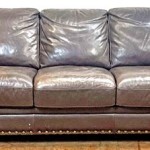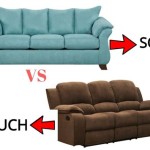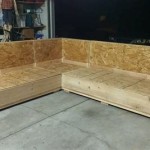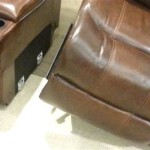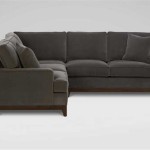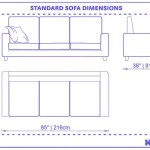How to Get a Large Sofa Through a Narrow Door
Moving a large sofa can present a significant logistical challenge, especially when faced with narrow doorways. The dimensions of modern sofas often exceed the standard width of interior or exterior doors, requiring careful planning and execution to avoid damage to the sofa, the door frame, or the surrounding walls. Successful navigation involves assessing the situation, employing appropriate techniques, and potentially disassembling the sofa or widening the doorway as necessary. Understanding the various strategies and their respective advantages and disadvantages is crucial for a smooth and damage-free sofa relocation.
Before attempting to move the sofa, meticulous preparation is paramount. This includes accurately measuring both the sofa's dimensions (height, width, depth) and the doorway's clear opening. The clear opening refers to the unobstructed space available when the door is fully open, excluding the door frame, hinges, and any protruding hardware. Compare these measurements to identify potential pinch points and areas where the sofa might get stuck. Note any architectural features that might impede movement, such as low-hanging light fixtures, narrow hallways, or tight corners.
Furthermore, remove any obstacles in the path, including rugs, furniture, and decorative items. Protecting the flooring with blankets, cardboard, or moving pads is essential to prevent scratches and dents. Similarly, pad the door frame with blankets or foam padding to protect the door frame and sofa upholstery from abrasion during the moving process. Gather necessary tools such as a screwdriver, pliers, utility knife, furniture sliders, and moving straps. Having these tools readily available will streamline the process and address unforeseen complications.
Assessing the Sofa and Doorway
The initial step involves a thorough assessment of the sofa's construction and the doorway's limitations. Is the sofa a single, solid unit, or is it modular with detachable sections? Modular sofas offer the advantage of being disassembled into smaller, more manageable pieces, significantly simplifying the moving process. If the sofa is a single unit, carefully examine it for any removable components, such as legs, cushions, or armrests. Removing these elements can reduce the overall dimensions and provide additional clearance.
Evaluate the doorway's structure. Is it possible to remove the door from its hinges to gain extra width? The removal of the door can sometimes add several inches of valuable space. Consider also the door frame itself. Is it a standard frame, or is it unusually narrow or ornate? In some cases, it may be necessary to temporarily remove a portion of the door frame, although this should only be considered as a last resort and undertaken by someone with carpentry experience.
Documenting the sofa's assembly (if applicable) with photographs or videos is highly recommended. This will serve as a valuable reference during reassembly and prevent confusion or errors. If the sofa has any specific disassembly instructions provided by the manufacturer, adhere to those guidelines carefully.
Techniques for Maneuvering the Sofa
Once the assessment is complete, the next step is to employ appropriate techniques to maneuver the sofa through the narrow doorway. Several strategies can be used, either individually or in combination, depending on the specific circumstances.
The Tilting and Rotating Method: This is perhaps the most common technique. It involves tilting the sofa on its side or end and rotating it to fit through the doorway. Begin by positioning the sofa perpendicular to the doorway. Tilt the sofa at an angle, carefully lifting one end. Rotate the sofa as you guide it through the doorway, ensuring that the corners clear the frame. This method requires careful coordination and communication between movers to prevent accidental drops or collisions. Furniture sliders placed under the tilted end can reduce friction and make the rotation easier.
The Pivot and Push Method: This technique is suitable for doorways that are slightly wider than the sofa's narrowest dimension. Position the sofa at an angle to the doorway, with one corner leading the way. Push the leading corner through the doorway, pivoting the sofa around that point. Gradually maneuver the remainder of the sofa through the opening. This method requires a smooth, unobstructed surface to allow for easy pivoting.
The "Up and Over" Method: In some cases, it may be necessary to lift the sofa over the door frame. This method requires significant strength and coordination and is best attempted with multiple movers. Carefully lift the sofa, ensuring that it clears the top of the door frame. Walk the sofa through the doorway, maintaining a consistent height. This method is particularly useful for doorways with low lintels or other obstructions.
Using Moving Straps: Moving straps can provide additional grip and leverage when maneuvering the sofa. Wrap the straps securely around the sofa, ensuring that they are evenly distributed. Use the straps to lift, tilt, and rotate the sofa, providing greater control and reducing the strain on movers. Moving straps are particularly helpful when dealing with heavy or bulky sofas.
Communication is Key: Throughout the entire process, clear and consistent communication between movers is essential. Designate one person to act as the "spotter," guiding the others and alerting them to potential hazards. Use clear and concise instructions, such as "lift," "rotate," "push," and "stop." Regular check-ins and adjustments will help prevent accidents and ensure that the sofa is moved safely.
Disassembly and Alternative Solutions
If the aforementioned techniques prove insufficient, disassembling the sofa or exploring alternative solutions may be necessary. Disassembly should be approached with caution, as improper handling can damage the sofa or its components.
Sofa Disassembly: If the sofa is modular or has removable components, carefully disassemble it according to the manufacturer's instructions. Remove cushions, legs, armrests, and any other detachable parts. This will significantly reduce the sofa's overall dimensions and make it easier to maneuver. Pay close attention to the order of disassembly and label each component to facilitate reassembly. Store all hardware (screws, bolts, etc.) in a secure container to prevent loss. If the sofa has a fabric or leather covering, consider carefully removing it to gain access to the internal frame. This can reduce the overall bulk and provide additional clearance.
Temporary Doorway Modifications: As a last resort, consider temporarily widening the doorway. This may involve removing a portion of the door frame or even temporarily removing a section of the wall. This should only be undertaken by someone with carpentry experience and should be done with extreme caution to avoid structural damage. Consult with a professional contractor before making any significant alterations to the doorway.
Alternative Entry Points: Explore alternative entry points, such as windows or sliding glass doors. Windows, particularly those on the ground floor, may offer a wider opening than the doorway. Sliding glass doors can often be removed entirely, providing ample space for moving the sofa. Ensure that the alternative entry point is clear of obstacles and that the surrounding area is protected from damage.
Professional Movers: If all other options fail, consider hiring professional movers. Professional movers have the experience, equipment, and expertise to handle challenging sofa relocations. They can assess the situation, develop a plan, and execute the move safely and efficiently. While hiring professional movers will incur a cost, it can ultimately save time, effort, and potential damage to the sofa and the property.
In conclusion, moving a large sofa through a narrow doorway requires careful planning, precise execution, and a willingness to adapt to unforeseen challenges. By thoroughly assessing the situation, employing appropriate techniques, and considering alternative solutions, it is often possible to successfully navigate even the most difficult doorway configurations. Prioritizing safety and communication throughout the process will minimize the risk of damage and ensure a smooth and efficient sofa relocation.

How To Get A Sofa Through Small Door

How To Get A Sofa Through Small Door

How To Move A Couch Through Narrow Door

How To Get My Too Big Couch Through The Small Door

How To Get A Sofa Through Small Door

What To Do When Furniture Won T Fit Through The Door 7 Solutions
:max_bytes(150000):strip_icc()/move-sofa-couch-through-door-2436333-08-525102acbefa48ad97daabc11a9a9302.jpg?strip=all)
How To Move A Couch Through Narrow Door

How To Get A Couch Through Doorway 5 Tips And Tricks Xtraspace Self Storage Business

How To Get Your Big Sofa Through The Door

How To Get A Wide Couch Through The Door

